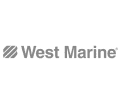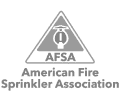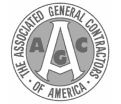Fire Protection & OSHA Regulations
The purpose of the Occupational Safety and Health Administration (OSHA) is to ensure employee healthy and safe in the workplace. OSHA has established many regulations in a variety of categories. When it comes to meeting OSHA fire protection standards, Kauffman Co. can help. Here are some of the rules requiring your compliance.
Fire Prevention & Safety Plans
Employers are required to establish fire prevention and safety plans that help prevent fires in the first place and address how to extinguish a blaze if one should occur. The plans must be formally written and kept on the premises so employees can review them if desired.
A fire prevention plan must include:
- A list of major fire hazards and ignition sources on the premises.
- Hazardous material storage and handling procedures and the type of fire protection equipment used to control each hazard.
- Procedures to prevent combustible and flammable waste materials from accumulating.
- Maintenance and safeguard procedures to prevent accidental ignition of heat-producing equipment.
- Names and titles of employees responsible for fire protection equipment maintenance and hazard control.
A fire safety plan must include:
- A list of significant fire hazards and procedures for reporting unsafe conditions.
- Procedures for alerting employees of a fire, notifying the fire department, evacuating the building, and accounting for all employees after evacuation.
Portable Fire Extinguishers
OSHA permits employers to choose how to use portable fire extinguishers. You may decide to evacuate all employees in an emergency, permit certain employees to fight fires with extinguishers, or permit all employees to use fire extinguishers when the situation calls for it. While there are exemptions, most employers are required to follow these OSHA fire extinguisher regulations:
- Stock the building with the proper type of fire extinguishers according to hazards in the immediate vicinity.
- Mount fire extinguishers so they are readily accessible. Travel distance between extinguishers should not exceed 50 or 75 feet, depending on the type installed.
- Maintain, inspect, and test fire extinguishers regularly.
- Provide fire extinguisher training for employees expected to use them in an emergency.
- Do not use extinguishers with carbon tetrachloride or chlorobromomethane in areas where employees may be exposed to their toxicological effects.
- Make sure any hose and standpipe systems substituted for Class A portable fire extinguishers meet the applicable requirements.
Automatic Sprinkler Systems
Many sprinkler systems operating today were installed according to standards established by the National Board of Fire Underwriters, an organization that is no longer active. OSHA recognizes and approves of these systems that follow older standards. Also, if your sprinkler system is meant to protect property, not people, then you’re exempt from these regulations. Otherwise, make sure you:
- Design the sprinkler system to provide complete coverage.
- Maintain, inspect, and test the sprinklers regularly.
- Protect the piping against freezing and mechanical damage.
- Set up a local water flow alarm to alert building occupants that a sprinkler has engaged.
Automatic Fire Suppression Systems
In areas where sprinkler systems aren’t ideal for extinguishing a blaze, OSHA requires automatic fire suppression systems. Follow these regulations:
- Install systems that use extinguishing agents approved to fight the specific fire hazard in the immediate vicinity.
- Inspect fire suppression systems regularly.
- Fix system defects as soon as possible and in the meantime, warn employees to take extra precautions against fire.
- Provide a distinctive alarm to alert building occupants that the fire suppression system is discharging.
- Warn employees who work around fire suppression systems of the hazardous extinguishing agents they may be exposed to if the system discharges.
- Provide safeguards to warn employees against entering areas where the atmosphere remains hazardous following extinguishing agent discharge.
- Provide protective equipment for employees to rescue someone trapped in a discharge area that could be hazardous to their health.
- Do not use suppression systems with carbon tetrachloride or chlorobromomethane in areas where employees may be exposed to their toxicological effects.
Fire Alarms
OSHA places a strong emphasis on fire alarms because, while they don’t actively extinguish the blaze, they alert building occupants of the emergency so they can evacuate. To be in compliance, follow these regulations:
- Install alarms with visual and audible signals to ensure people with vision or hearing impairments receive the message.
- Keep alarm systems in good working order, including restoring normal function after each test or alarm.
- Service, maintain, and test the alarm regularly.
- Explain to your employees the preferred method of reporting a fire, such as activating a pull station or using the public address system.
At Kauffman Co., we design, install, maintain, test, repair, and monitor the fire protection systems you need to comply with OSHA regulations. To learn more about these standards, or to schedule fire protection services in the greater Houston area, please contact Kauffman Co. online today.
















